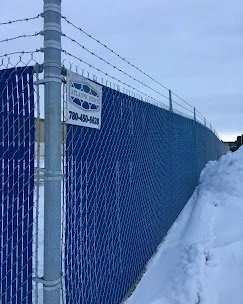Mobile Welding Services in Edmonton | On-Site MIG Welding
/If you are looking for Mobile Welding Services in Edmonton, Atlantic Fence offers reliable, professional, and convenient solutions for residential, commercial, and industrial projects. With on-site MIG welding, the company provides fast, efficient, and high-quality welding services directly at your location. This means no unnecessary transportation of materials or equipment, saving you time, effort, and cost.
What Are Mobile Welding Services?
Mobile Welding Services in Edmonton by Atlantic Fence are designed to bring expert welding directly to your doorstep. Whether you need small fence repairs, custom metal fabrication, or structural welding for equipment, the team comes fully equipped with all necessary tools. This approach ensures that projects are completed quickly without compromising on quality or safety.
Mobile welding services include:
On-site MIG welding
Fence and gate repairs
Handrail and railing fabrication
Custom metalwork and one-off projects
Equipment and trailer repairs
By providing these services on-site, Atlantic Fence ensures that customers have a convenient, hassle-free solution for all their welding needs.
Benefits of Hiring Atlantic Fence for Mobile Welding
Hiring Atlantic Fence’s Mobile Welding Services in Edmonton comes with multiple advantages:
Convenience and Speed: No need to transport heavy items; the welding team comes directly to your location.
Cost-Effective: On-site services reduce logistical expenses and save time while ensuring top-quality work.
Custom Solutions: Handle unique fencing, gates, handrails, and custom metal projects tailored to your requirements.
Professional Expertise: Skilled welders provide clean, durable, and precise welds using MIG technology.
Time-Saving: Projects can be completed faster than traditional workshop welding.
Reliable Support: Atlantic Fence provides professional guidance on repair or fabrication options.
Services Offered by Atlantic Fence
Atlantic Fence specializes in a wide range of Mobile Welding Services in Edmonton:
On-Site MIG Welding: Perfect for small to medium projects where precision and speed are essential.
Fence and Gate Repairs: Including hinge adjustments, latch replacements, post reinforcement, and gate frame repair.
Handrails & Custom Railings: Functional and decorative metal railings for residential, commercial, or industrial properties.
Custom Metal Fabrication: One-off projects, brackets, frames, and structural components fabricated on-site.
Equipment and Trailer Repairs: Welding repairs for trailers, farm equipment, and small machinery to restore full functionality.
With this broad service offering, Atlantic Fence can handle almost any welding requirement at your location.
Why Choose Atlantic Fence for Mobile Welding?
Choosing Atlantic Fence guarantees professional, efficient, and high-quality service:
Local Expertise: Deep knowledge of Edmonton regulations, safety, and fencing standards.
Efficient Turnaround: Quick response times and timely project completion.
Durable Workmanship: Precision MIG welding ensures long-lasting results.
Transparent Pricing: Clear estimates and no hidden charges.
Customer Satisfaction: Dedicated to delivering excellent results and maintaining a strong reputation in Edmonton and surrounding areas.
Service Areas
Atlantic Fence’s Mobile Welding Services in Edmonton are available across:
Edmonton
St. Albert
Sherwood Park
Spruce Grove
Stony Plain
Leduc
Fort Saskatchewan
This broad coverage ensures that both residential and commercial clients across Northern Alberta can access reliable, on-site welding services.
Advantages of Mobile Welding
Mobile Welding Services in Edmonton offer benefits beyond convenience:
Flexible Scheduling: Atlantic Fence works around your availability for minimal disruption.
Safety First: All welding work is performed following safety standards to prevent accidents.
Environment-Friendly: On-site welding reduces the need for transportation, saving fuel and reducing carbon footprint.
Emergency Repairs: Quick response for urgent welding issues, including fence damage, gate failure, or metalwork repair.
These advantages make mobile welding an ideal solution for time-sensitive and location-specific projects.
Conclusion
For reliable, convenient, and professional Mobile Welding Services in Edmonton, Atlantic Fence provides expert on-site MIG welding for fences, gates, handrails, custom metal fabrication, and equipment repairs. Their skilled team ensures precise, durable results with fast turnaround times. By choosing Atlantic Fence, you get professional service, transparent pricing, and peace of mind for all your welding needs.
Whether it’s a small repair or a custom metal fabrication project, Atlantic Fence’s mobile welding solutions are designed to meet your exact requirements efficiently and effectively.




